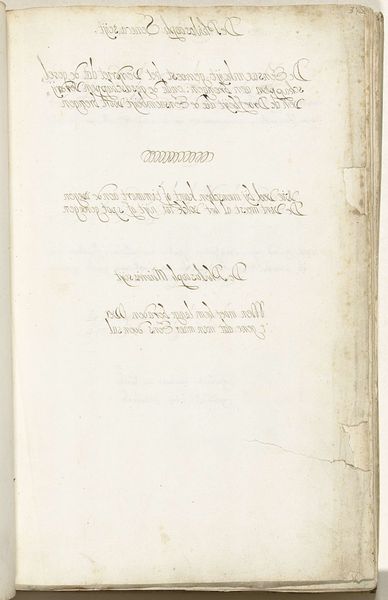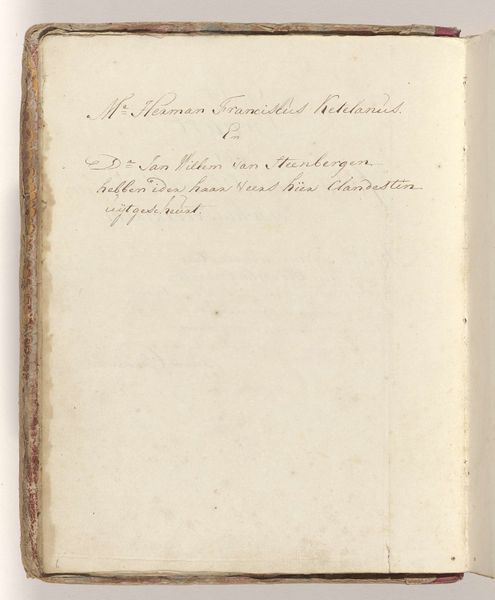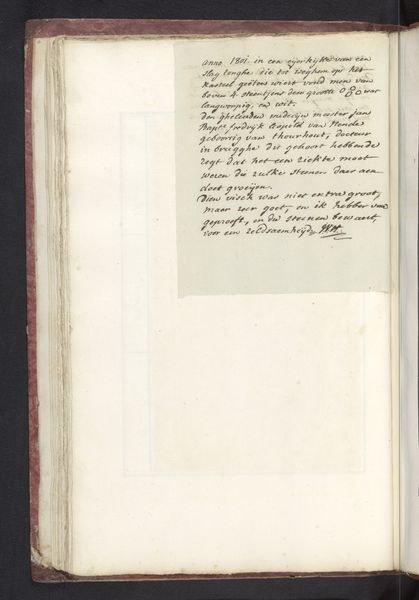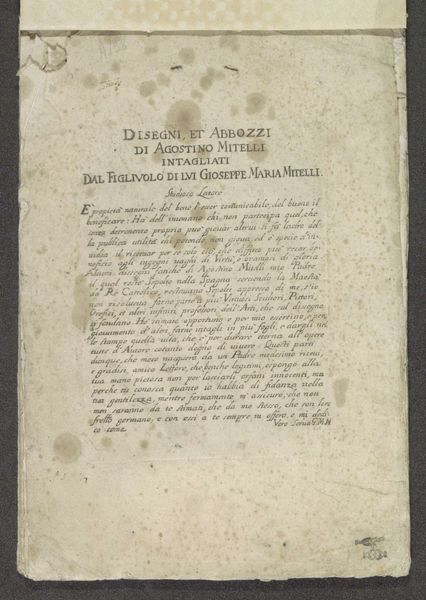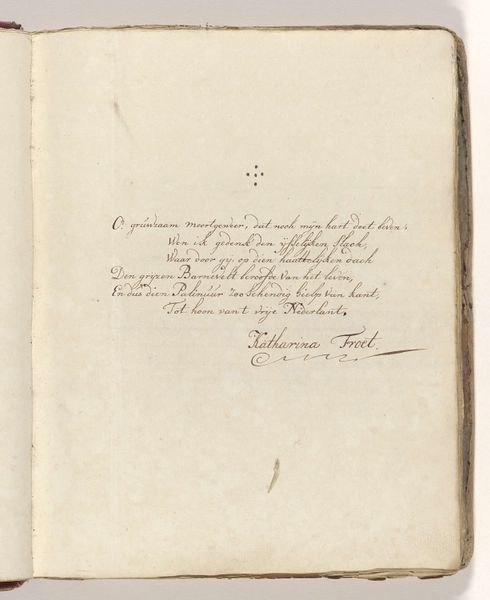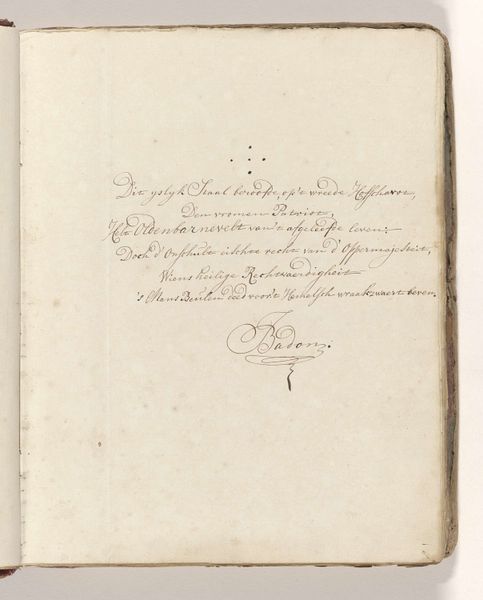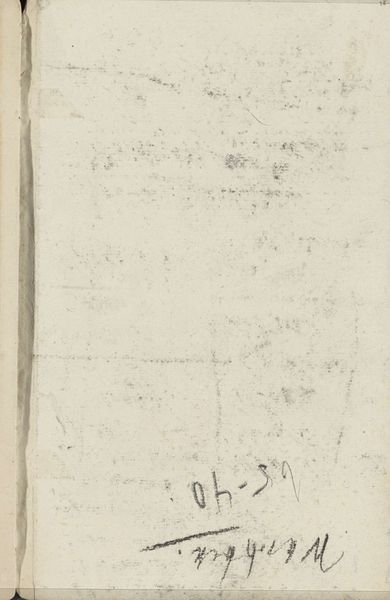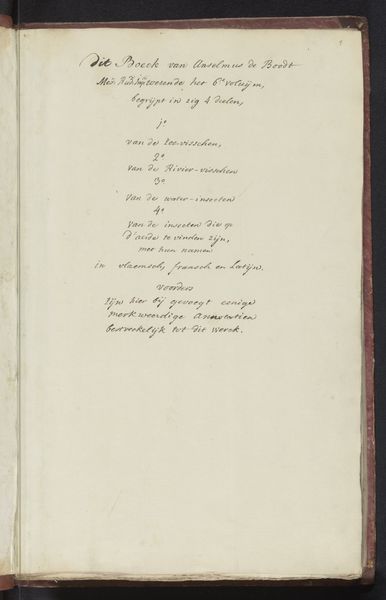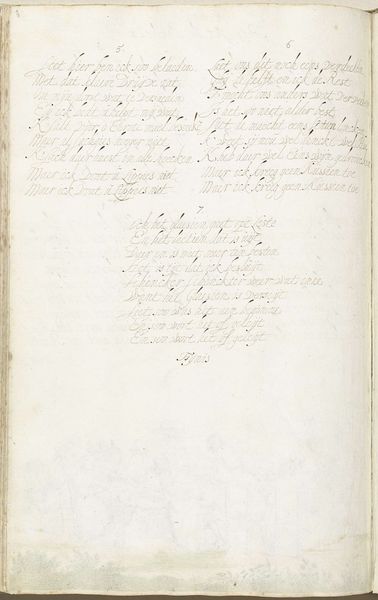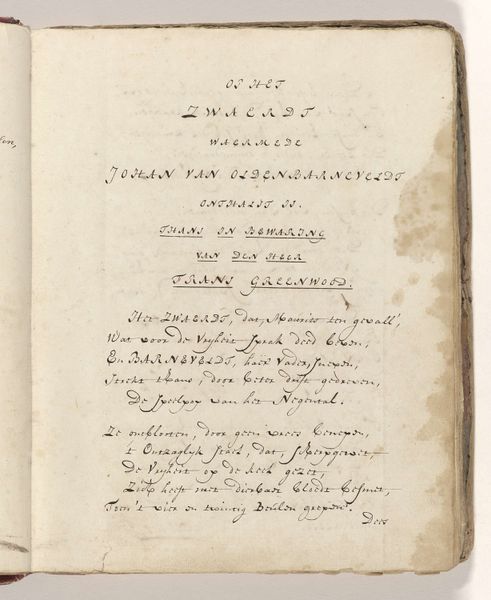
drawing, textile, paper, ink
#
portrait
#
drawing
#
aged paper
#
hand written
#
hand drawn type
#
hand lettering
#
textile
#
paper
#
tea stained
#
personal sketchbook
#
ink
#
fading type
#
watercolour illustration
#
northern-renaissance
#
sketchbook art
#
watercolor
#
calligraphy
Dimensions: height 308 mm, width 202 mm
Copyright: Rijks Museum: Open Domain
Here is a page from Gesina ter Borch’s book, presenting classical aphorisms written in mirror image. This curious format, reversing the familiar order, encourages a deeper reflection on the nature of truth and perception. The mirror, often associated with self-awareness and introspection, appears throughout history, even in vanitas paintings, reminding us of life's transience and inviting contemplation. Mirror writing amplifies this concept, making the viewer an active participant in deciphering the hidden message. Think of Leonardo da Vinci, who frequently employed mirror writing to safeguard his scientific and philosophical ideas. This act of concealment speaks to the psychological depths of creativity and the desire to protect one's inner world from the uninitiated. The recurring symbolism of the mirror in art and literature suggests a profound connection between the self, knowledge, and the elusive nature of reality. Thus, Ter Borch’s mirror-image aphorisms invite us to explore the cyclical patterns of human understanding.
Comments
No comments
Be the first to comment and join the conversation on the ultimate creative platform.
